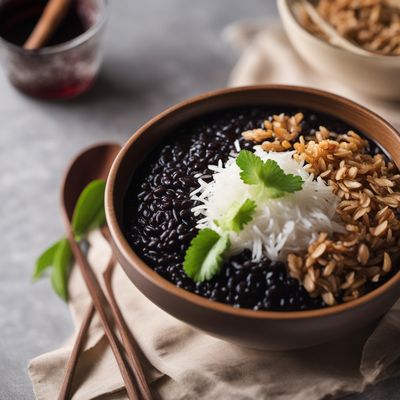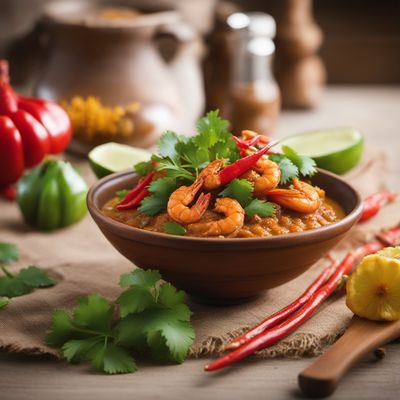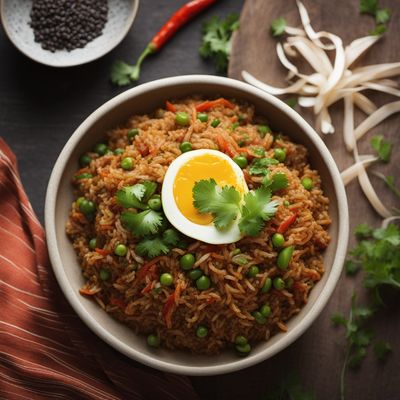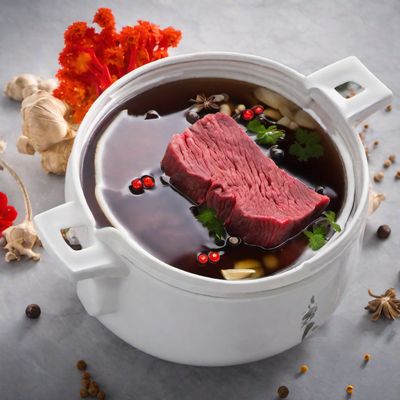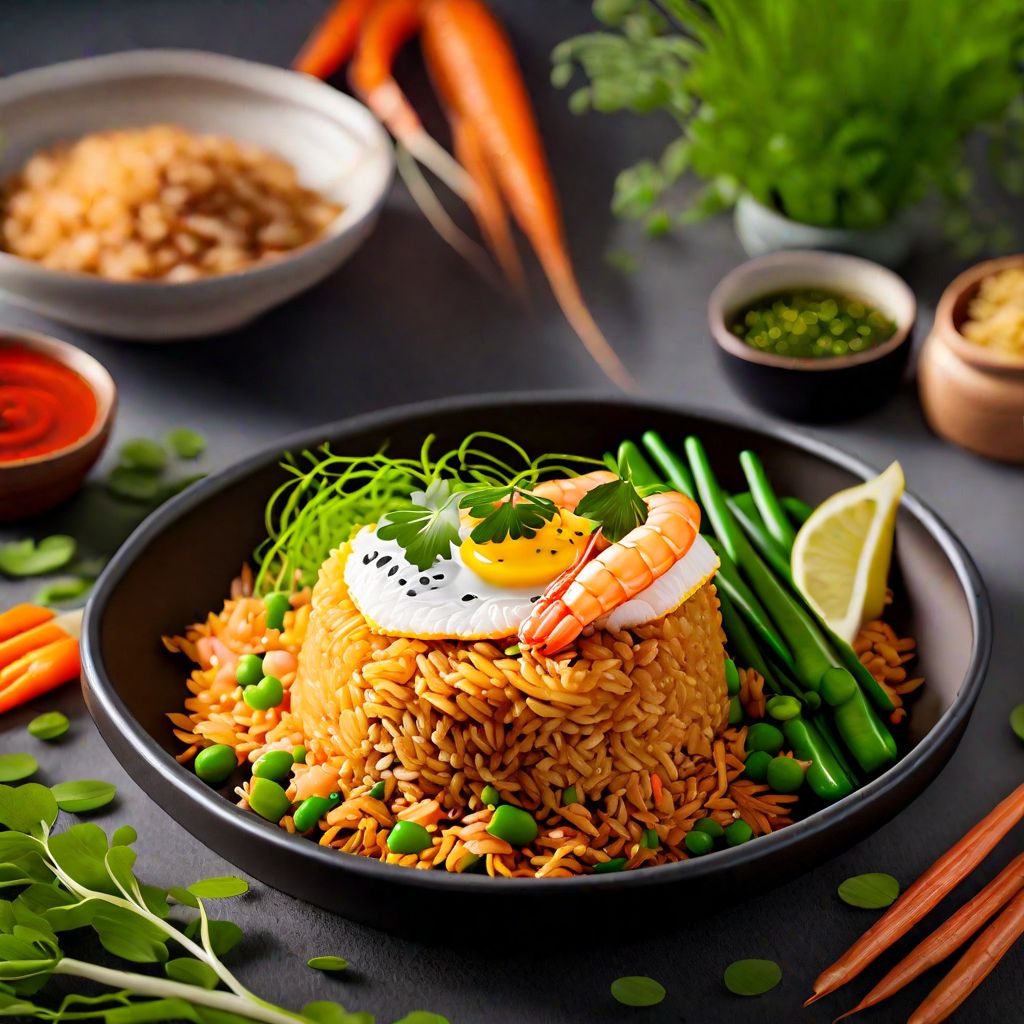
Recipe
Nasi Goreng with a Molecular Twist
Molecular Gastronomy Nasi Goreng: A Fusion of Flavors
4.8 out of 5
In the realm of molecular gastronomy, we take the beloved Indonesian dish, Nasi Goreng, and elevate it to new heights. By incorporating innovative techniques and unique ingredients, we create a dish that combines the traditional flavors of Nasi Goreng with the modern artistry of molecular cuisine. Get ready to embark on a culinary adventure like no other.
Metadata
Preparation time
30 minutes
Cooking time
1 hour
Total time
1 hour and 30 minutes
Yields
4 servings
Preparation difficulty
Medium
Suitable for
Vegetarian, Pescatarian, Gluten-free, Dairy-free, Low-carb
Allergens
Shellfish, Eggs, Soy
Not suitable for
Vegan, Nut-free, Egg-free, Soy-free, Paleo
Ingredients
While the essence of Nasi Goreng remains intact, the molecular gastronomy adaptation introduces a playful twist to the dish. We use scientific principles to transform familiar ingredients into unexpected textures and presentations. By deconstructing and reconstructing the elements of Nasi Goreng, we create a visually stunning and sensorially captivating experience. We alse have the original recipe for Nasi goreng, so you can check it out.
-
200g (7 oz) jasmine rice 200g (7 oz) jasmine rice
-
50g (1.8 oz) chicken breast, sous vide 50g (1.8 oz) chicken breast, sous vide
-
50g (1.8 oz) shrimp, cooked and diced 50g (1.8 oz) shrimp, cooked and diced
-
30g (1 oz) carrots, julienned 30g (1 oz) carrots, julienned
-
30g (1 oz) green beans, blanched and sliced 30g (1 oz) green beans, blanched and sliced
-
20g (0.7 oz) shallots, finely chopped 20g (0.7 oz) shallots, finely chopped
-
2 cloves garlic, minced 2 cloves garlic, minced
-
2 eggs, sous vide 2 eggs, sous vide
-
10g (0.35 oz) soy sauce caviar 10g (0.35 oz) soy sauce caviar
-
5g (0.18 oz) sambal gel 5g (0.18 oz) sambal gel
-
5g (0.18 oz) crispy shallots 5g (0.18 oz) crispy shallots
-
5g (0.18 oz) microgreens 5g (0.18 oz) microgreens
Nutrition
- Calories (kcal / KJ): 350 kcal / 1465 KJ
- Fat (total, saturated): 10g, 2g
- Carbohydrates (total, sugars): 45g, 3g
- Protein: 20g
- Fiber: 3g
- Salt: 2g
Preparation
-
1.Cook the jasmine rice according to package instructions and set aside.
-
2.Sous vide the chicken breast at 65°C (149°F) for 1 hour, then dice it into small pieces.
-
3.Prepare the sous vide eggs by cooking them at 63°C (145°F) for 45 minutes.
-
4.In a hot pan, sauté the shallots and garlic until fragrant.
-
5.Add the diced chicken, shrimp, carrots, and green beans to the pan and stir-fry until cooked through.
-
6.Add the cooked rice to the pan and mix well with the other ingredients.
-
7.Plate the Nasi Goreng creatively, using a ring mold to shape the rice.
-
8.Garnish with soy sauce caviar, sambal gel, crispy shallots, and microgreens.
Treat your ingredients with care...
- Jasmine rice — Use day-old rice for better texture.
- Chicken breast — Sous vide cooking ensures tender and juicy results.
- Shrimp — Opt for fresh, deveined shrimp for the best flavor.
- Soy sauce caviar — Use a syringe or dropper to create small droplets of soy sauce that resemble caviar.
- Sambal gel — Blend sambal oelek with agar agar to create a gel-like consistency.
Tips & Tricks
- Experiment with different molecular techniques, such as spherification or foams, to add more complexity to the dish.
- Substitute traditional ingredients with molecular gastronomy alternatives, like using liquid nitrogen to freeze herbs into powders.
- Play with temperature contrasts by incorporating elements that are hot, cold, or frozen.
- Use edible flowers or microgreens to enhance the visual appeal of the dish.
- Don't be afraid to get creative and think outside the box!
Serving advice
Serve the Molecular Gastronomy Nasi Goreng as a main course, accompanied by a side dish or salad. The visually striking presentation will impress your guests, so encourage them to take a moment to appreciate the artistry before diving in.
Presentation advice
Arrange the components of the dish thoughtfully on the plate, paying attention to color, texture, and height. Use tweezers or small utensils to delicately position the garnishes and create an aesthetically pleasing arrangement. Remember, presentation is key in molecular gastronomy.
More recipes...
For Nasi goreng » Browse all
For Indonesian cuisine » Browse all
More Indonesian cuisine dishes » Browse all

Es teler
Es teler is a popular Indonesian dessert that is made with a combination of fruits, coconut milk, and sweetened condensed milk. It is a refreshing...

Tengkleng
Tengkleng is a traditional Indonesian soup made with goat meat and a variety of spices.

Sate Madura
Madura Satay
Sate Madura is a popular Indonesian dish that is made with chicken or beef that is marinated in a mixture of spices and then grilled on skewers....




